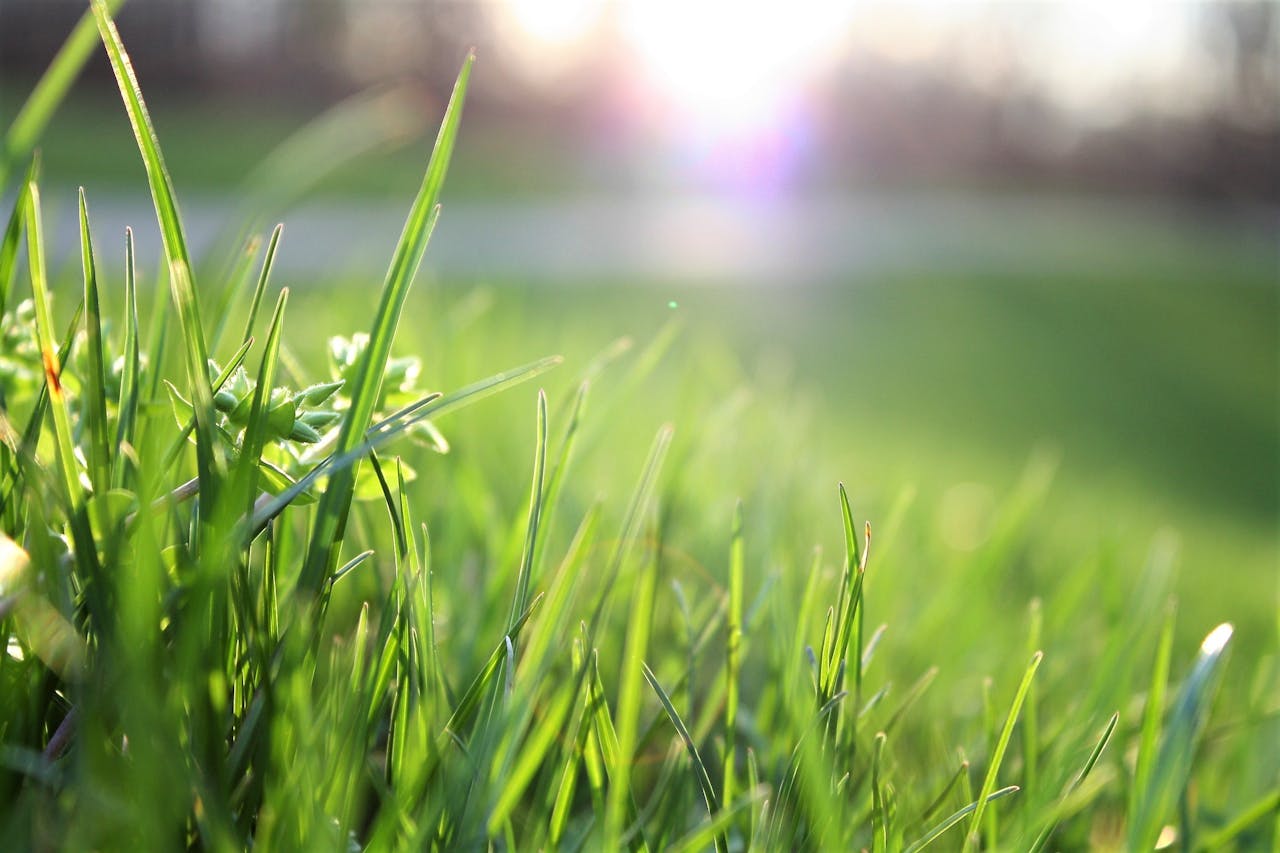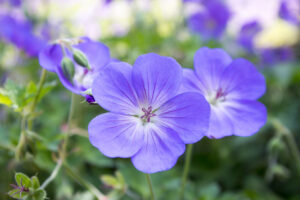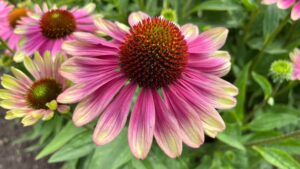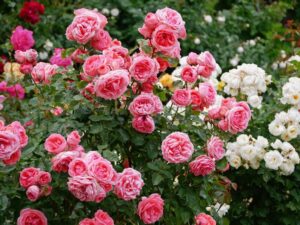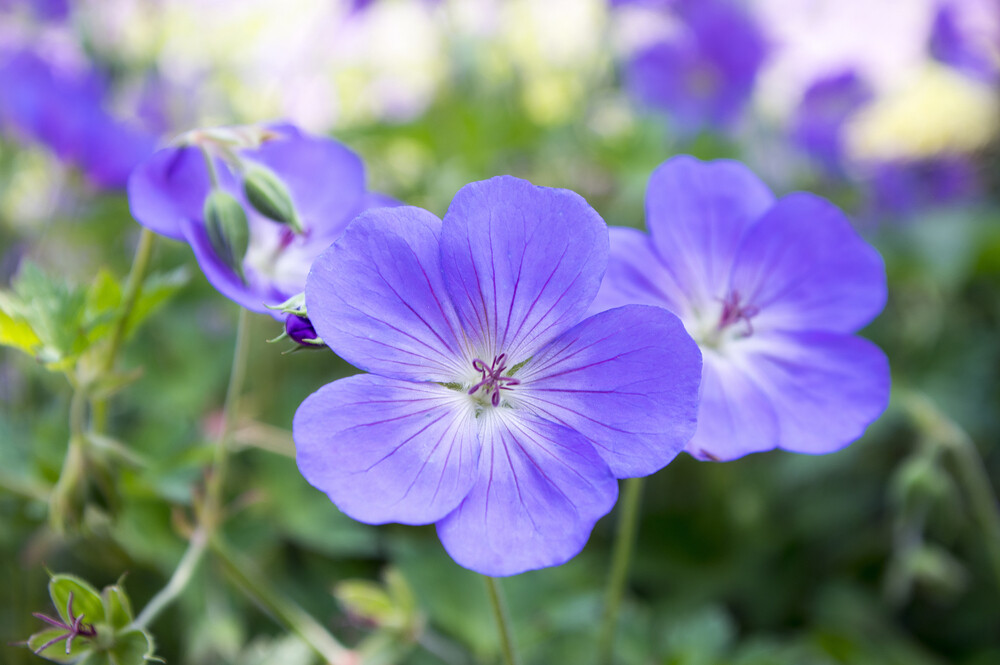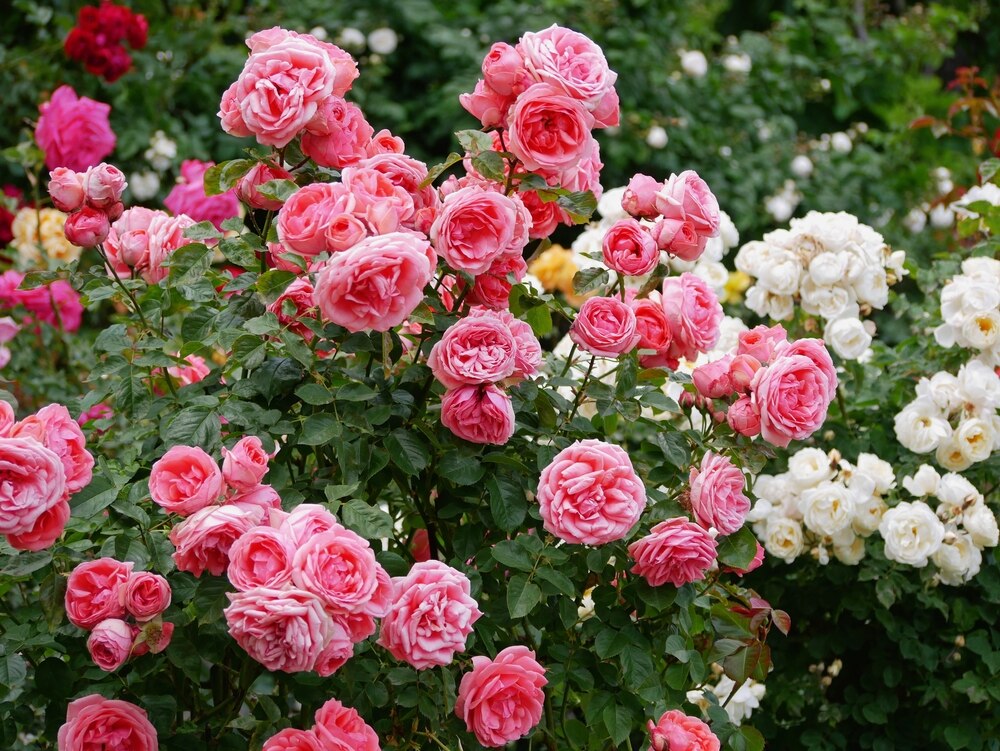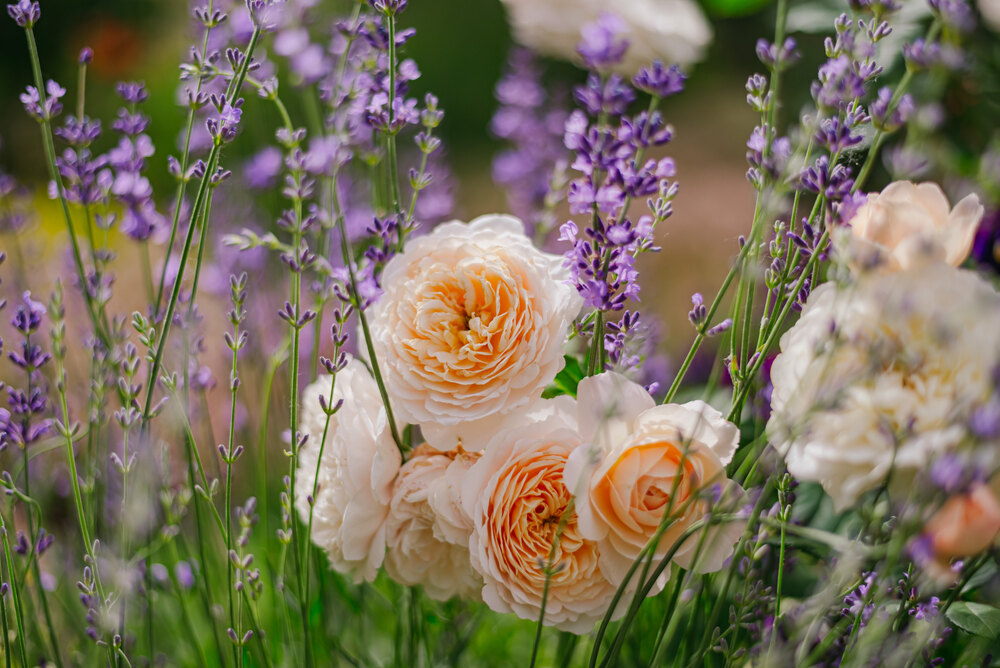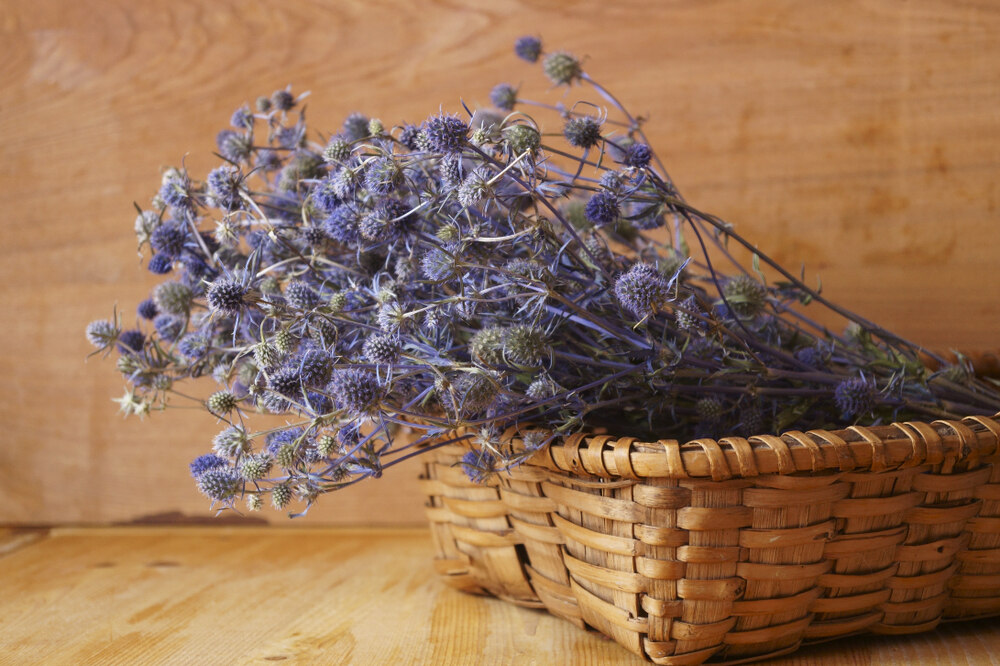For decades, the traditional lawn has been a staple of UK gardens, admired for its neat, green appearance and versatility as a space for relaxation and recreation. However, in recent years, the concept of the manicured lawn has come under fire from environmentalists, ecologists, and some gardeners who argue that lawns are ecologically damaging and contribute to climate change. This has led to a growing movement advocating for the replacement of lawns with more sustainable alternatives, such as wildflower meadows, which support biodiversity, improve soil health, and require less water and maintenance.
This debate over the future of the lawn has become increasingly contentious, as it touches on deeper issues of environmental responsibility, garden aesthetics, and cultural values. In this blog post, we’ll explore both sides of the lawn debate, examine the environmental impact of traditional lawns, discuss the benefits of alternative garden styles like wildflower meadows, and offer practical advice for UK gardeners looking to make informed decisions about their green spaces.
The Traditional Lawn: A British Icon
The traditional lawn is as much a symbol of British gardens as roses and topiary. For many, a well-maintained lawn represents order, beauty, and the perfect backdrop for outdoor activities like picnics, barbecues, and games of croquet. Historically, lawns were a status symbol, originating in the grand estates of the aristocracy, where they were a demonstration of wealth and the ability to maintain large areas of land without the need for agricultural production.
Over time, lawns became more accessible to the middle class, especially with the advent of mechanical lawnmowers in the 19th century. Today, lawns are ubiquitous in UK gardens, and for many gardeners, maintaining a lush, green lawn is a point of pride. However, this ideal comes at a cost, both in terms of time and resources.
The Environmental Cost of Lawns
While lawns may be aesthetically pleasing and culturally significant, they are not without their downsides—particularly from an environmental perspective. Critics of traditional lawns point to several key concerns:
1. Water Usage
Lawns require significant amounts of water to stay green, particularly during the increasingly hot and dry summers that the UK has been experiencing in recent years. Watering lawns can place a strain on local water supplies, especially during periods of drought when water restrictions may be in place. While some parts of the UK receive ample rainfall, areas that experience dry spells may find lawn maintenance increasingly difficult and unsustainable.
According to research by Water UK, garden irrigation can account for up to 70% of household water use during the summer months. Much of this water is wasted through evaporation or runoff, particularly if irrigation systems are not properly managed.
2. Chemical Inputs
Many gardeners rely on chemical fertilizers, herbicides, and pesticides to keep their lawns looking pristine. These chemicals can have harmful effects on the environment, particularly when they enter waterways through runoff. For example, nitrogen and phosphorus from lawn fertilizers can contribute to nutrient pollution in rivers, lakes, and coastal waters, leading to algal blooms and the degradation of aquatic ecosystems.
Additionally, the widespread use of herbicides like glyphosate to control weeds in lawns has sparked concerns about its impact on biodiversity, human health, and soil health (as discussed in our previous post on glyphosate). Many of these chemicals not only harm the plants they are intended to target but also have negative effects on beneficial insects, soil microbes, and other wildlife.
3. Carbon Footprint
Maintaining a traditional lawn has a significant carbon footprint. This is largely due to the emissions associated with lawnmowers, leaf blowers, and other garden machinery, which are often powered by fossil fuels. Additionally, the production and transportation of fertilizers, pesticides, and grass seed contribute to greenhouse gas emissions.
A 2020 study by the Center for Biological Diversity found that gas-powered lawn equipment emits as much pollution as cars, with a single hour of lawnmower use producing as much pollution as driving 300 miles. For gardeners concerned about climate change, reducing reliance on fossil fuel-powered garden equipment is a key consideration.
4. Biodiversity Loss
One of the most significant criticisms of traditional lawns is their contribution to biodiversity loss. Lawns are typically monocultures, meaning they consist of a single species of grass, often maintained at the expense of other plant life. This lack of plant diversity can result in a sterile environment that provides little to no habitat or food for pollinators, insects, birds, and other wildlife.
In contrast, more diverse plantings such as wildflower meadows or native planting schemes support a wide variety of species, contributing to healthier ecosystems. The decline of pollinators like bees and butterflies has been linked to habitat loss, including the loss of wildflower meadows and other biodiverse landscapes that have been replaced by lawns and other forms of development.
The Case for Keeping Lawns: Why Many Gardeners Are Sticking with Tradition
Despite the growing concerns about the environmental impact of lawns, many gardeners continue to maintain traditional grass lawns. There are several reasons why lawns remain popular, even in the face of criticism:
1. Cultural Significance and Aesthetic Appeal
Lawns have long been a symbol of a well-maintained and orderly garden, and for many, the sight of a green lawn evokes feelings of calm, beauty, and nostalgia. The aesthetic appeal of a lawn is difficult to replicate with other types of ground cover, and for some gardeners, the appearance of their garden is a key priority.
Lawns also provide a versatile space for recreation and relaxation, making them a practical choice for families with children or pets who need an open area to play. The uniformity and simplicity of a lawn can also serve as a neutral backdrop for more ornamental plantings, helping to highlight flower beds, shrubs, and trees.
2. Ease of Maintenance
While lawns do require regular mowing and occasional feeding, some gardeners find them easier to maintain than more complex planting schemes. For gardeners who prefer a simpler approach to garden care, a lawn may seem like a manageable option, particularly if they are not interested in learning the skills needed to maintain a more biodiverse garden.
Additionally, the infrastructure for lawn care is well-established, with a wide range of products, tools, and services available to support gardeners in maintaining their lawns. This accessibility makes lawns an attractive option for those who value convenience.
3. Functional Space
Lawns provide a functional, usable space that can be enjoyed for a variety of activities, from playing sports to hosting social gatherings. For many gardeners, this practicality outweighs the environmental downsides of maintaining a lawn. A lawn can be an important feature in gardens that are designed with multi-use spaces in mind.
4. Resilience
Grass is a resilient plant that can recover from wear and tear, making it a durable option for high-traffic areas. Unlike more delicate plantings, a lawn can withstand foot traffic, making it a suitable choice for areas where people and pets frequently walk or play.
The Rise of Wildflower Meadows: A Sustainable Alternative to Lawns
In response to the environmental concerns associated with traditional lawns, many gardeners are exploring alternative ground covers that are more sustainable and wildlife-friendly. One of the most popular alternatives is the wildflower meadow, which offers a naturalistic and low-maintenance option for gardeners who want to support biodiversity.
Wildflower meadows consist of a mixture of native grasses and wildflowers, creating a diverse habitat that attracts pollinators, birds, and other wildlife. They are often seen as a more ecologically responsible choice than lawns, as they require less water, fewer chemical inputs, and less frequent mowing.
1. Biodiversity Benefits
One of the biggest advantages of wildflower meadows is their ability to support biodiversity. Wildflowers provide nectar and pollen for bees, butterflies, and other pollinators, while the grasses and other plants in the meadow offer food and shelter for a wide range of insects, birds, and small mammals.
A study conducted by the Royal Horticultural Society (RHS) found that wildflower meadows can support up to five times more species of pollinators than traditional lawns. This makes them an important tool in the fight against pollinator decline, which has been linked to the loss of wild habitats and the widespread use of pesticides.
In addition to supporting pollinators, wildflower meadows can also help to create a more diverse soil ecosystem. The variety of plant species in a meadow encourages a wider range of soil microbes, fungi, and other organisms, which can improve soil health and fertility over time.
2. Low Maintenance Requirements
Once established, wildflower meadows are generally low-maintenance compared to traditional lawns. They require less frequent mowing, often only once or twice a year, which can help reduce the need for fossil fuel-powered garden equipment. In addition, wildflower meadows typically do not require chemical fertilizers or pesticides, further reducing their environmental impact.
Wildflower meadows are also drought-tolerant, as many wildflowers and native grasses are adapted to survive in dry conditions. This makes them a more sustainable option for areas that experience water shortages or restrictions.
3. Aesthetic Appeal
While wildflower meadows have a more naturalistic appearance than traditional lawns, they can be just as visually appealing. The mix of flowers and grasses creates a dynamic landscape that changes throughout the seasons, offering a variety of colors and textures. For gardeners who appreciate a more informal, cottage-style garden, wildflower meadows can be an attractive alternative to a manicured lawn.
Wildflower meadows can also be tailored to suit different garden styles and preferences. For example, gardeners can choose wildflower mixes that focus on particular color schemes, such as pastel shades for a more subdued look or vibrant reds, oranges, and yellows for a bolder display.
Challenges of Wildflower Meadows: Why Some Gardeners Are Hesitant to Make the Switch
Despite their many benefits, wildflower meadows are not without their challenges, and some gardeners may be hesitant to make the switch from traditional lawns. Here are some of the potential drawbacks:
1. Establishment Time
Wildflower meadows can take time to establish, and the process may require more effort than simply sowing grass seed. The soil must be prepared properly, and it may take a few years for the meadow to reach its full potential. During this establishment phase, the meadow may not look as tidy or uniform as a lawn, which can be frustrating for gardeners who are used to the immediate results of a freshly mowed lawn.
In addition, wildflower meadows often require specific soil conditions to thrive. For example, they tend to do best in nutrient-poor soils, as overly fertile soils can encourage the growth of grasses and other plants that outcompete wildflowers. Gardeners may need to take steps to reduce soil fertility before establishing a meadow, which can add to the initial effort and cost.
2. Seasonal Appearance
Unlike lawns, which remain green and uniform throughout much of the year, wildflower meadows have a more seasonal appearance. While they can be full of color and life during the spring and summer months, they may appear brown and less visually appealing during the winter. For gardeners who value a consistent, green landscape year-round, this seasonal variability may be a drawback.
3. Use and Functionality
While wildflower meadows are excellent for supporting wildlife, they may not be as functional for certain garden uses as traditional lawns. For example, they are not well-suited for high-traffic areas or for activities like playing sports, as the taller grasses and flowers can be easily damaged. Gardeners who need a space for recreation may find that a wildflower meadow does not meet their needs in the same way that a lawn does.
How to Transition from a Lawn to a Wildflower Meadow
For gardeners who are interested in transitioning from a traditional lawn to a wildflower meadow, the process can be rewarding but requires careful planning. Here are some steps to help make the transition:
1. Assess Your Site
Before starting, it’s important to assess your site to determine whether it is suitable for a wildflower meadow. Consider factors such as soil type, sunlight, and moisture levels. Most wildflowers prefer well-drained, nutrient-poor soils and full sun, so choose a location that meets these conditions.
If your soil is too fertile, you may need to reduce its fertility by removing the top layer of soil or by sowing a green manure crop that can help deplete the soil’s nutrients.
2. Prepare the Ground
Proper ground preparation is key to establishing a successful wildflower meadow. Start by removing any existing grass, weeds, or other vegetation. This can be done by digging, tilling, or using a non-selective herbicide (if you choose to use chemicals). Once the ground is clear, rake the soil to create a fine, even surface for sowing the wildflower seeds.
3. Choose the Right Seed Mix
There are many different wildflower seed mixes available, so choose one that is suited to your soil type and growing conditions. Look for a mix that includes a variety of native wildflowers and grasses that will provide color and interest throughout the year.
For best results, sow the seeds in the autumn or early spring, as this is when wildflowers naturally germinate. Broadcast the seeds evenly across the prepared soil, then lightly rake them in to ensure good seed-to-soil contact.
4. Maintain the Meadow
During the first year, it’s important to keep an eye on the meadow as it establishes. Regularly remove any invasive weeds that may compete with the wildflowers, and consider mowing the meadow once or twice during the first season to help encourage the growth of the flowers.
Once the meadow is established, maintenance is relatively simple. Mow the meadow once a year in late summer or early autumn after the flowers have set seed. This will help to control the growth of grasses and encourage the wildflowers to return the following year.
Conclusion: Lawns vs. Wildflower Meadows—A Personal Choice
The debate over lawns and wildflower meadows is ultimately a personal one, with each gardener needing to weigh the benefits and challenges of both options. For those who value a neat, green space that can be used for recreation, the traditional lawn may still be the best choice. However, for gardeners who are concerned about the environmental impact of their garden and want to support biodiversity, wildflower meadows offer a compelling alternative.
As climate change and biodiversity loss continue to shape the way we think about our gardens, it’s likely that the popularity of wildflower meadows will continue to grow. Whether you choose to keep your lawn, transition to a meadow, or find a balance between the two, the most important thing is to create a garden that reflects your values and meets your needs.
